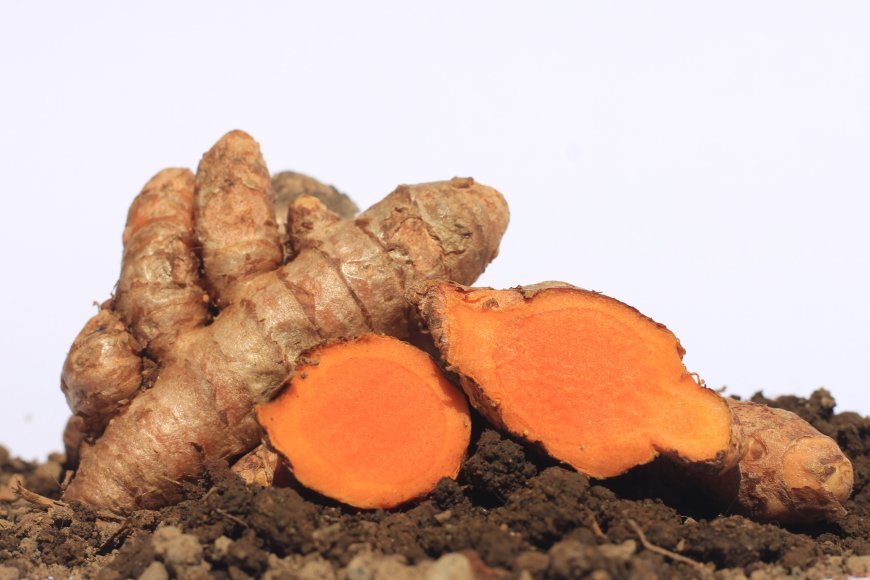The Amazing Benefits of Turmeric: From Spice to Traditional Herbal Medicine
Turmeric is one of the main ingredients in many traditional dishes, and apart from giving dishes their distinctive yellow color, it is also used as a natural dye and food preservative. The specialty of turmeric is its ability to last for more than a year, making it a valuable herbal medicine. In the lontar Usadha Tiwang turmeric is described as a traditional herbal medicine capable of relieving all kinds of ailments.

Traditional Balinese medicine refers to a cultural heritage of traditions, experiences, and skills that have been passed down from generation to generation. Balinese people have a strong belief in their traditional system of medicine as they believe that health and illness depend on the balance between body, mind and spirit, known as Shtula Sarira, Suksma Sarira and Antahkarana Sarira. One of the traditional treatment methods used for various ailments in Bali is Usadha Tiwang, which uses a mixture of ingredients, mainly derived from plants, to treat patients. Lontar Usadha Tiwang specifically discusses the disease Tiwang.
Tiwang is a disease characterized by symptoms such as discomfort, pain, aching, restlessness, flickering of the eyes, muscle stiffness, and even loss of consciousness. Tiwang types are differentiated based on their symptoms; for example, northern tiwang is characterized by restlessness (meunyang-anyingan) and flickering eyes. Tiwang tojos are also characterized by restlessness (meunyang-anyingan) and blinking eyes, as well as hands that are difficult to keep still (pati grepe). Meanwhile, Tiwang udang is characterized by hand and foot movements similar to those of shrimp, and bulging eyes. In addition, the lontar Usadha Tiwang also mentions other illnesses such as cough and mokan, which are characterized by swelling and pain. The different types of illnesses or symptoms for which turmeric blends are used are presented in table 1.
Table 1. Diseases or symptoms of diseases and their treatments in Lontar Usadha Tiwang
|
Disease |
Symptoms |
Mixture of Medicinal Ingredients |
Treatment method |
|
Tiwang Bawi |
Swelling next to the navel |
Curcuma demostica, Piper betle L), Allium sativum L, Acorus calamus, Cryptocarya massoy, Oryza nivara, and raw lime |
Used as a powder |
|
Tiwang Kretas |
Swelling next to the navel, sticky phlegm |
Erythrina variegate, Curcuma demostica, and Cane sugar |
Ingested |
|
Belo |
Stomach pain |
Moringa oleifera L, Curcuma demostica, Allium sativum L, Acorus calamus, Cryptocarya massoy, Piper retrofractum , Piper longum L, Piper nigrum L, Curcuma demostica. Kesuna Allium sativum L |
Worn as a sembar |
Turmeric, also known as Curcuma longa, is a type of spice that has a long history in the Southeast Asian region. The turmeric plant has spread widely to countries such as Malaysia, Indonesia, Australia, and even Africa, as well as many other Asian countries. Turmeric is not just an ordinary kitchen spice, but also has many benefits besides being used in cooking. The ingredients in turmeric are very beneficial for the health of the body, and there are many benefits that can be obtained from turmeric apart from being a seasoning. One of the main ingredients in turmeric is curcumin, a natural compound that gives turmeric its bright color. Curcumin has antibacterial, anti-inflammatory, and antioxidant properties that are very beneficial for health.
Curcumin in turmeric plays a role in boosting the immune system. Consuming yellow turmeric water regularly can also help fight viral infections in the respiratory tract due to the presence of kataral compounds. Curcumin is an antioxidant that is effective in stopping the activity of enzymes and cytokines that can cause inflammation in the body. Therefore, turmeric is very beneficial for relieving inflammation and increasing cortisone production by the adrenal glands in the body. The curcumin content in turmeric can also be absorbed by the human bloodstream, helping to reduce pressure in the stomach. Turmeric consumption can reduce nausea by reducing gas pressure in the stomach and controlling excessive acid production. In addition, the curcumin in turmeric can also help relieve menstrual pain by relaxing uterine contractions that can cause stomach cramps.
White Turmeric (Photo Source: Private Collection)
Taking turmeric herbs regularly can also control excessive production of stomach acid and bile. It can also improve sensitivity to insulin and make diabetes management more effective, as well as reduce abdominal pain caused by intestinal inflammation. In addition to yellow turmeric, white turmeric also has benefits in treating uterine, colon, and breast cancers that have spread. This is due to curcumin, which can inhibit the growth of cancer cells and their spread. In addition, curcumin and bisdesmethoxycurcumin in turmeric serve as anti-allergic compounds that can relieve skin itching.
Research has also shown that turmeric can be used as a first aid for snake bites, as it can inhibit the activity of snake venom in the blood, prevent its spread throughout the body, and reduce swelling caused by snake bites. White turmeric is also effective in fighting fungal and bacterial growth in the body, and helps in the treatment of food poisoning, skin infections, mouth ulcers, yeast infections of the female area, and bad breath problems by eliminating bacteria. In addition to boosting the immune system and overcoming bacterial infections, consuming turmeric water can also help maintain body shape and support weight loss. Here are the ingredients and how to make turmeric concoction:
Ingredients for making turmeric herbal medicine:
- 500 ml water
- 1 finger of turmeric
- 40 grams palm sugar
- 2 pinches of salt
- 2 tablespoons of honey
How to make turmeric herbal medicine:
- Wash and grate the turmeric. Set aside.
- Bring water to a boil, then add sugar, tamarind, and salt. Cook until all ingredients are dissolved.
- Add grated turmeric to the stew and stir well.
- Strain the tamarind turmeric concoction and add honey.
- Once the steam is gone, store in the refrigerator. Can also be enjoyed with ice cubes.






























































